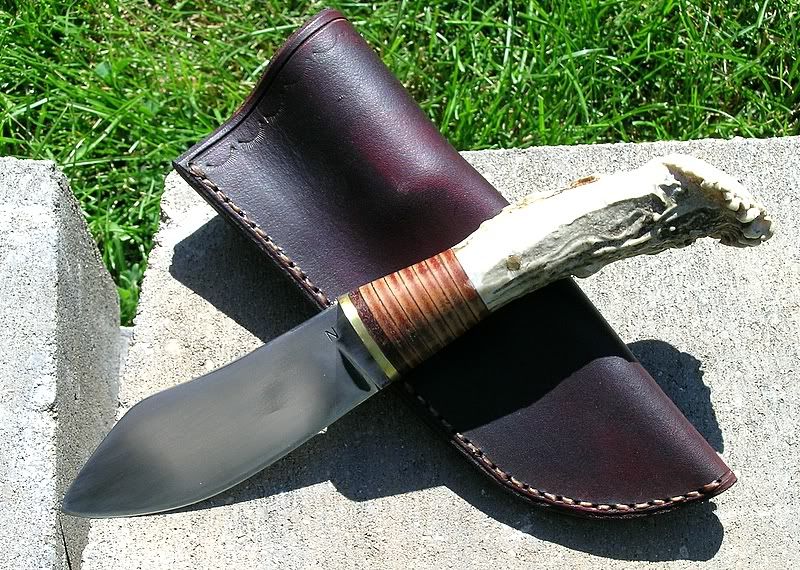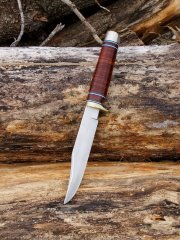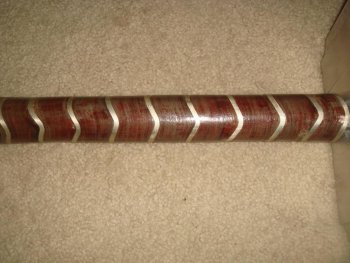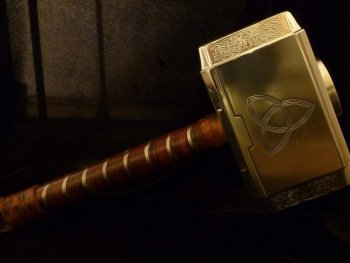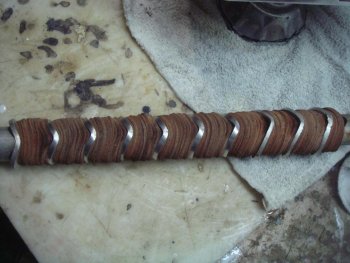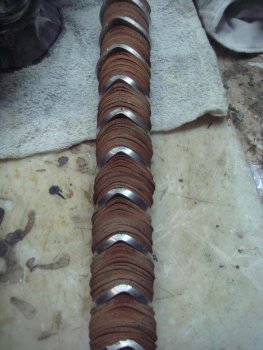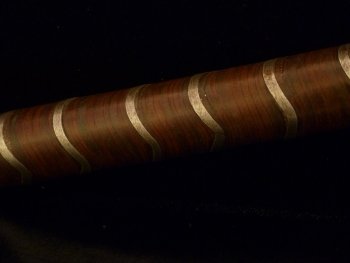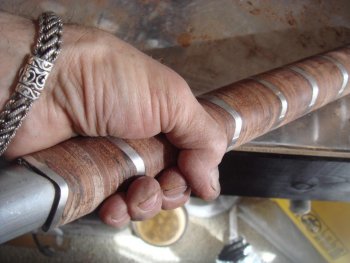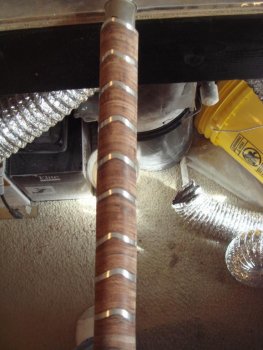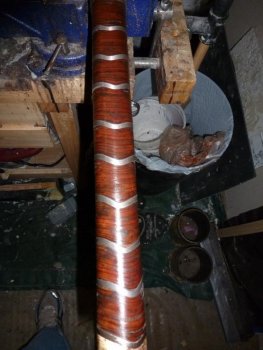I bought the pre-cut washers from our resident supplier and they worked out great. Plenty big enough for the largest handles, though they might be a bit pricey by some's thinking.
I wetted the washers in clean water and used Gorilla glue to join them. Two or three at a time, I clamped them up between shims and set them aside to dry. Then I took those small stacks and glued them to each other until I had a handle-length that I liked. Any clamp will work because you're not needing a lot of pressure. I liked the Gorilla glue because it swells, insuring that all the nooks and crannies get filled, and sinks into the pores of the leather.
Good Vegetable-tanned leather will compress if you really squeeze it when it's wet... like I did. Do not put the pressure to them in your vice or they will squish to all sorts of shapes and thicknesses.. and this means more work for you. When they say "compressed leather washer" handles, they mean that the leather is pressed together, not squeezed without mercy. Ask me how I learned this!
I would be very curious about stabilizing the leather prior to installation. I have a knife on deck that I've done in leather, but it's not too late to send her off for stabilizing. I was planning on soaking the handle in Thompson's Wood Seal before installing it on the tang, and then give her regular coats of tung oil afterwards. But stabilizing would be more durable, for sure.

